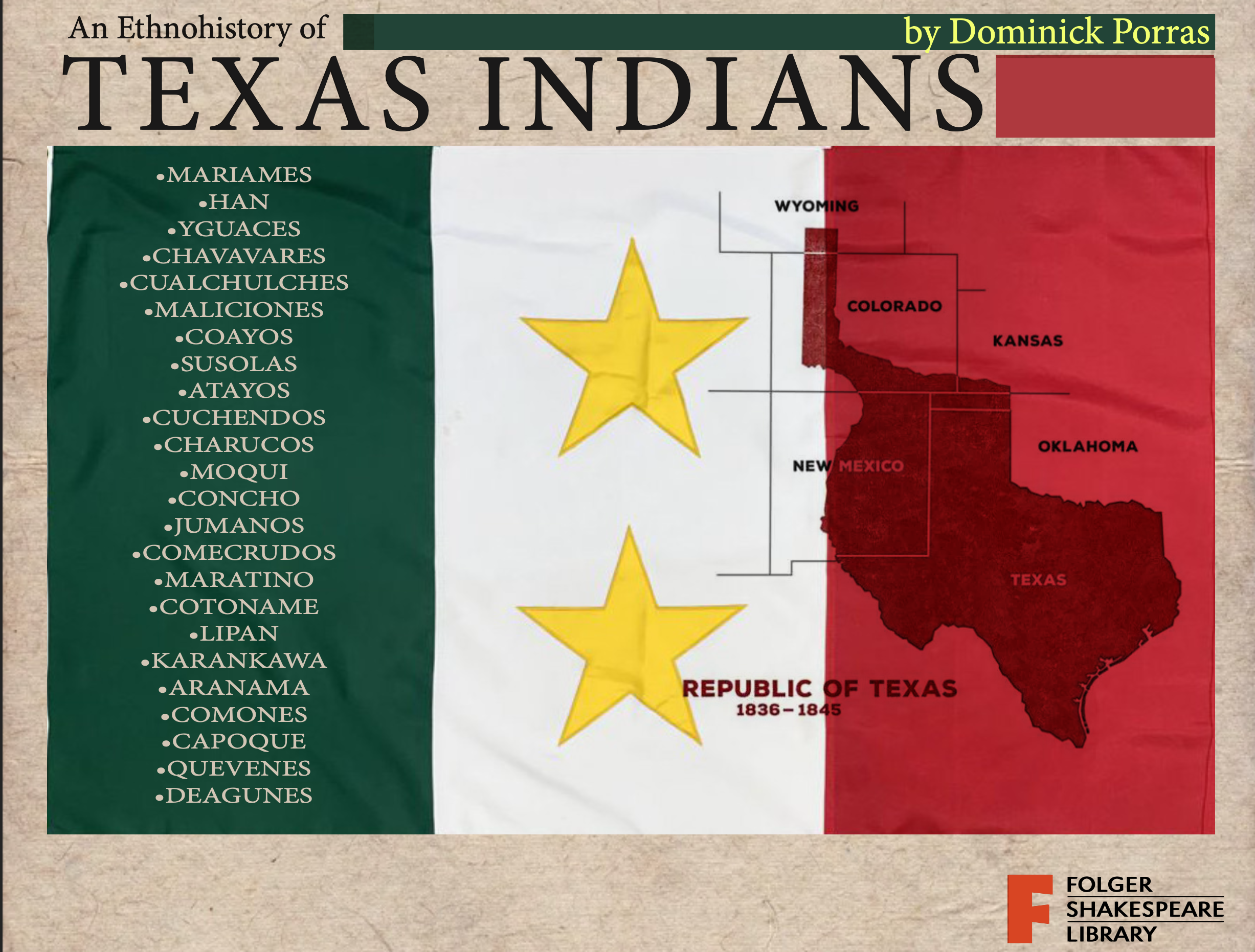
Folger Shakespeare Library Museum Art Fellowship 2024-2025
Through my previous presentation I presented my research project, An Ethnography on Texas Indians, primarily developed by investigating the novels, Shipwrecks and La Relacion told by the Great Spanish Explorer Alvar Nunez a.k.a. Cabeza de Vaca. Of the several critical responses to Nunez work such as 1905’s English translation Fanny Bandelier and contemporary history critic Morris Bishop, each provide unique and informative observations on Nunez’s epic journey into the interior of the Americas. However, there is a great deficit in which the responses fail to identify continuous cultural practices with contemporary communities who practice subsistence protocols like acorn blanching, netting for oyster, smelt and Fish Weir construction for harvesting and pooling seafood.
My experiences while being in community, formulating inter-tribal relations, I am able to recognize cultural reclamation practices mentioned in La Relacion like curanderismo as a form of spiritualism but also the several ecological components related to the practice. As a displaced member of my community the novel provides an intimate connection to the remaining biodiversity along the Rio Grande.
It was during a brief visit in the winter of 2024 where an exhibited book which featured illustrated images of Indigenous peoples during the early colonization of the West Indies. I felt that the timing of my visit to the museum helped provide a new inlet in which my research could adapt illustrated visuals.
In early May I returned to D.C. to the Folger Museum as a researcher to follow up with items that I requested from the collections vault, classical books on the Protestant artist and illustrator Theodore de Bry. De Bry who would become known for his narrative illustrations in conjuring up several Eurocentric-driven bodies of work (etchings primarily) in which the colonization of the Americas is seen as necessary and ordained.
For the imaginative approach in which De Bry’s work was orchestrated in, surprisingly enough he never visited the Americas or left the continent of Europe for that matter. Yet De Bry’s imagery contains many historical and significant meanings that illustrates the Anthropocene and its historical context.
De Bry hosted a printing Studio in Frankfurt during his lifetime between 1528-1598 works draws influences from other early 15th and 16th century painters, Johannes Stradanus and John White a both well-known illustrators who created early images of the Americas.
For more than 40 years De Bry definitive illustrations were published in 27 volumes, in three major languages (German for Protestants, Latin for Catholics and French) with his legacy continuing as his family inherited publishing rights 40 more years after his death. Nunez and De bry never officially collaborated, however it was Nunez who was the first to create a market for storytellers from their experiences in the new world. A new way to engage with the new world in ways the world had never witnessed in the form of literature. Nunez buzzworthy trend enabled other sailors and veterans of the conquest wanting to share their story and glorify their legacy as just and ordained a Christian God. De Bry’s work is primarily embodied with imagery that reflects the atrocities Indignous peoples faced on the account of the ensuing European invasion. Because DeBry never was able to witness anyone from the americas, De Bry aesthetics call upon roman-greco body and form. Within this era of colonization many Indigenous people were identified as peak conditioned and capable of chasing after deer until exhausted.
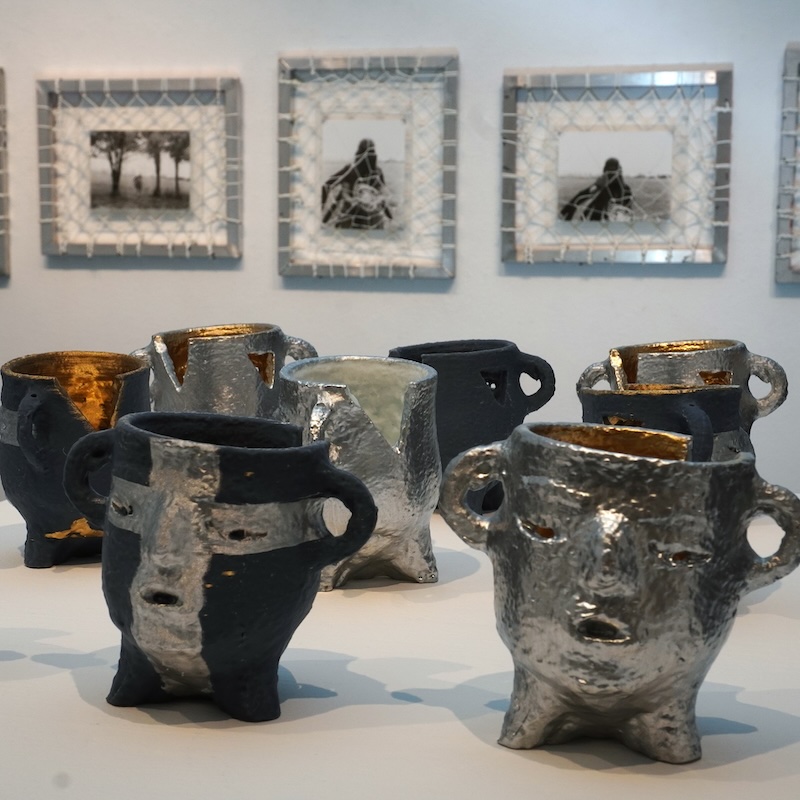
La Lechusa Cape 1 & Cosmovision: MNHRPA narration
Snaring & acrylic printed feathers sculpture 3'x2'
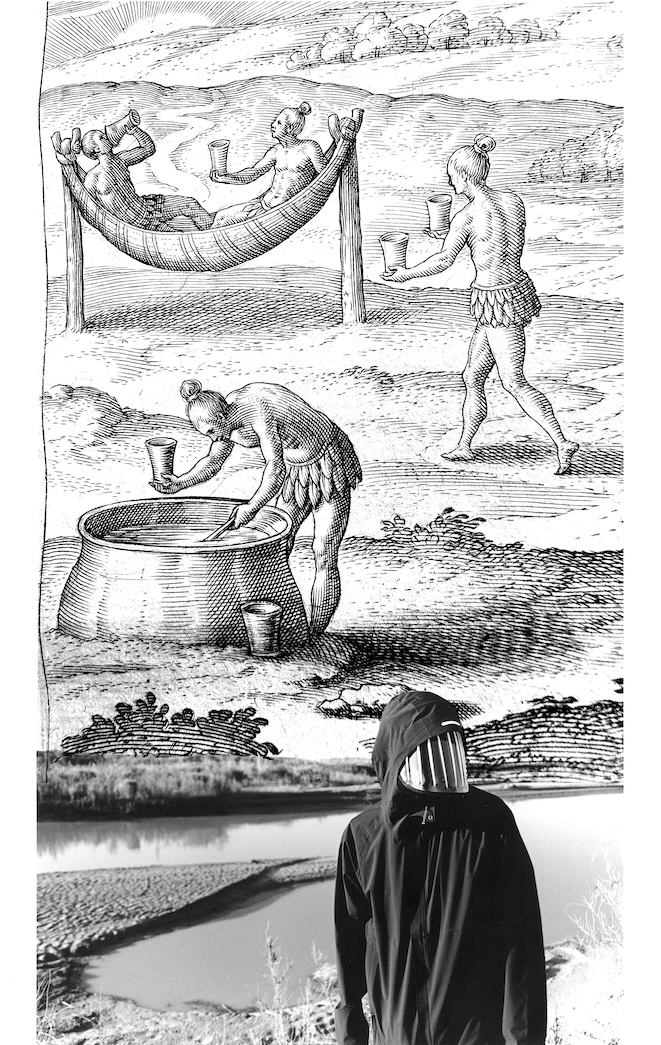
Shape Shifter: Nao Tah Yah - Pecos River - 2024
In early May I returned to D.C. to the Folger Museum as a researcher to follow up with items that I requested from the collections vault, classical books on the Protestant artist and illustrator Theodore de Bry. De Bry who would become known for his narrative illustrations in conjuring up several Eurocentric-driven bodies of work (etchings primarily) in which the colonization of the Americas is seen as necessary and ordained.
For the imaginative approach in which De Bry’s work was orchestrated in, surprisingly enough he never visited the Americas or left the continent of Europe for that matter. Yet De Bry’s imagery contains many historical and significant meanings that illustrates the Anthropocene and its historical context.
De Bry hosted a printing Studio in Frankfurt during his lifetime between 1528-1598 works draws influences from other early 15th and 16th century painters, Johannes Stradanus and John White a both well-known illustrators who created early images of the Americas.
For more than 40 years De Bry definitive illustrations were published in 27 volumes, in three major languages (German for Protestants, Latin for Catholics and French) with his legacy continuing as his family inherited publishing rights 40 more years after his death. Nunez and De bry never officially collaborated, however it was Nunez who was the first to create a market for storytellers from their experiences in the new world. A new way to engage with the new world in ways the world had never witnessed in the form of literature. Nunez buzzworthy trend enabled other sailors and veterans of the conquest wanting to share their story and glorify their legacy as just and ordained a Christian God. De Bry’s work is primarily embodied with imagery that reflects the atrocities Indignous peoples faced on the account of the ensuing European invasion. Because DeBry never was able to witness anyone from the americas, De Bry aesthetics call upon roman-greco body and form. Within this era of colonization many Indigenous people were identified as peak conditioned and capable of chasing after deer until exhausted.

Map of the Trail Alva Nunez Cabeza De Vaca
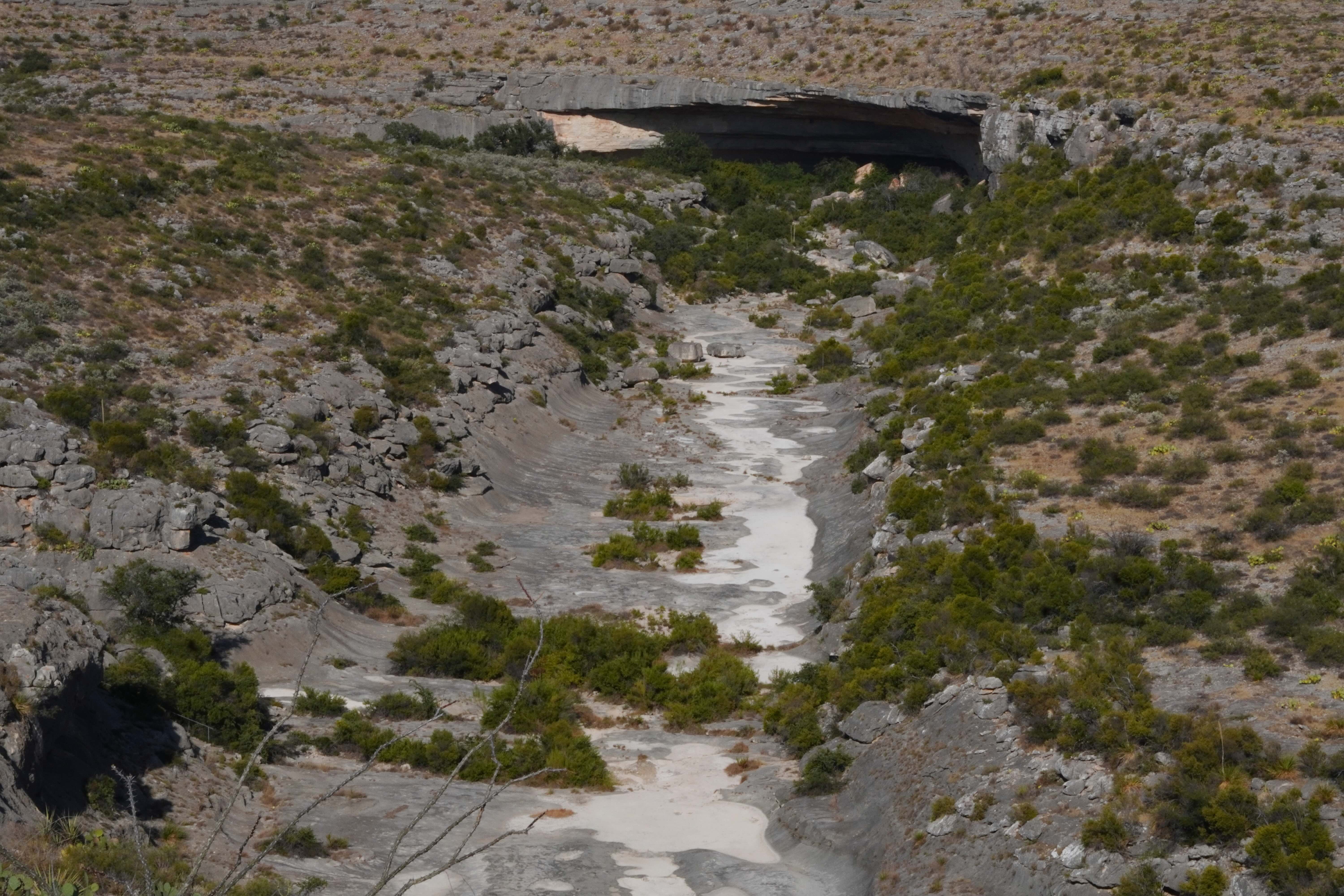
Fate Bell Shelter near Pecos River & Rio Grande Confluence 2024
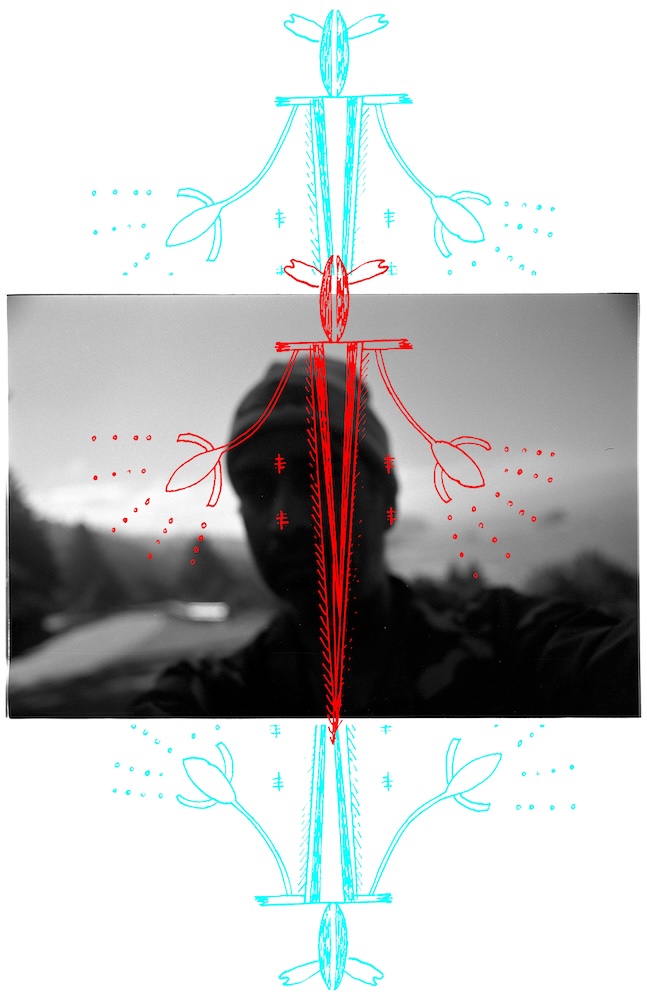
Unseen Existence...Emerging Corporality 2024
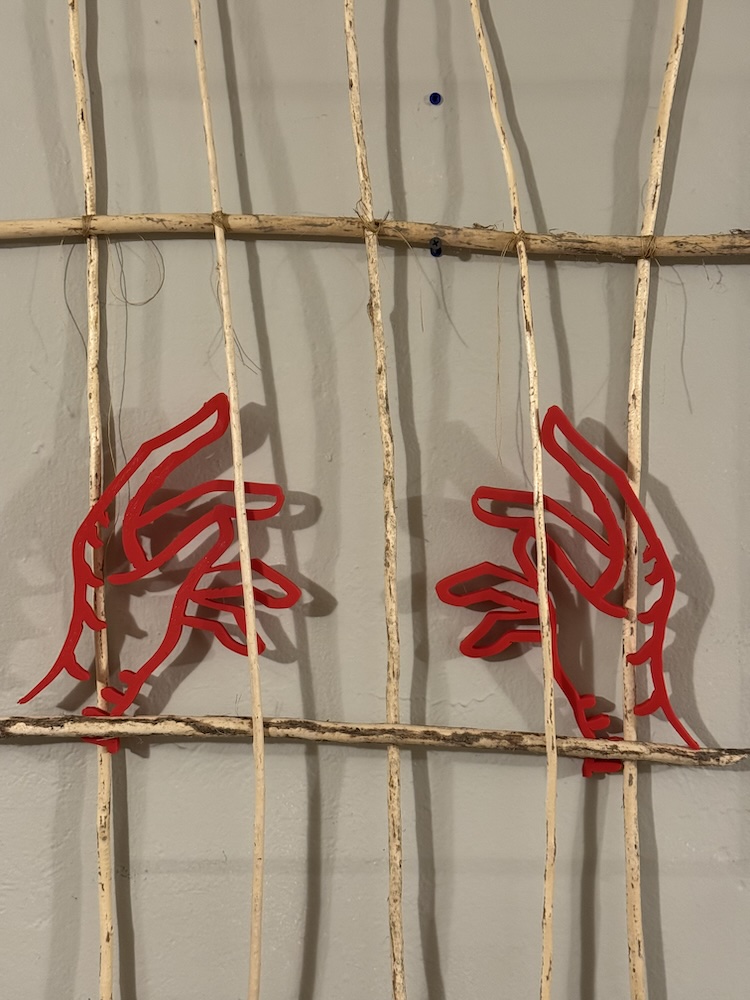
Fish Weir Model: Construction with 3D printed hands